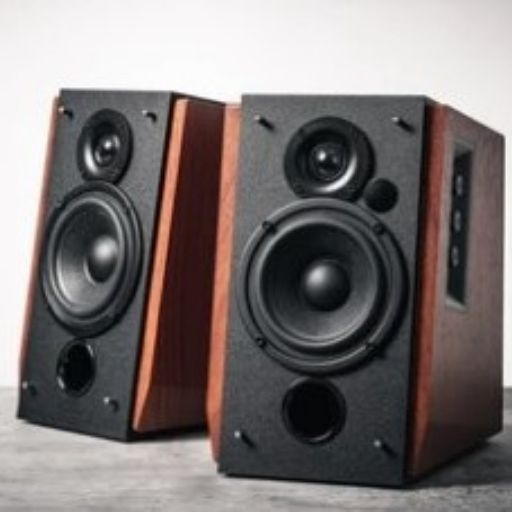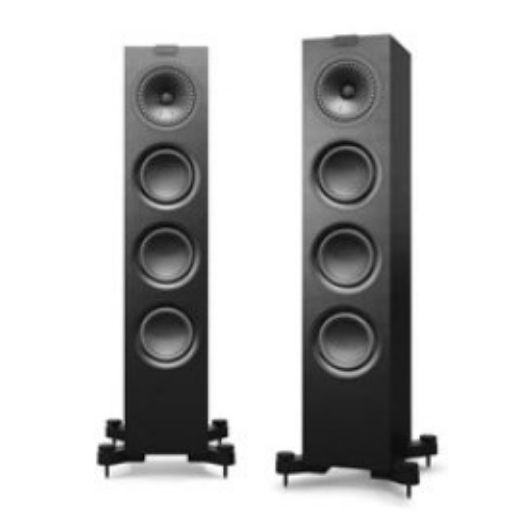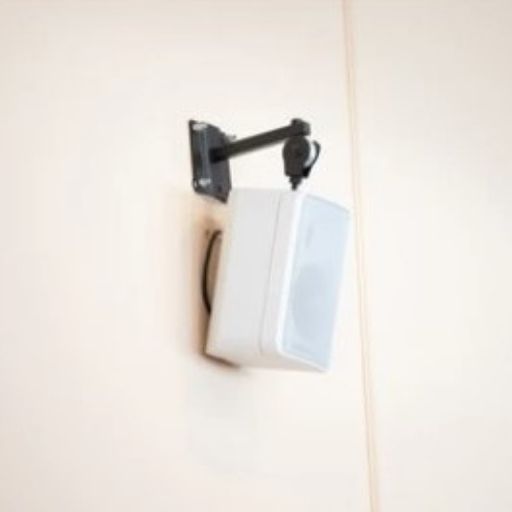Table of Contents
Intro:
If you’re in the market for a new set of speakers, you may be wondering whether you should buy a pair for your car or your home. Both have their pros and cons, so it ultimately comes down to what you need and what you’re willing to spend.
Here let’s go with us. Today we will discuss the difference between car speakers and home speakers.
What are the different types of car speakers?
There are many different types of car audio speakers on the market to improve your car audio systems. And different design car speakers have different features and specifications. However, the most common is the full-range speakers, which include a woofer, tweeter, and sometimes a mid-range driver. These speakers can be installed in the front or rear of the car.
There are also subwoofers, which are designed to produce low frequencies. They are usually installed in the trunk or under the seat. Some cars come with built-in subwoofers, while others can be added as an aftermarket upgrade.
Tweeters are small speakers that produce high frequencies. They are often mounted on the dashboard, door panels, or A-pillars. Tweeters help to create a more immersive sound experience in every sort of car audio system.
What are the different types of home speakers?
There are many different types of home audio speakers on the market. Here is a breakdown of the most common home design car speakers.
Bookshelf Speakers: Bookshelf speakers are usually small and rectangular. They’re designed to sit on a shelf or stand, and they typically have a single driver.

Floor Standing Speakers: Floor Standing speakers are large and cylindrical, and they tend to have multiple drivers. They place in the center of a room, and many models come with built-in amplifiers.

In-Wall Speakers: In-wall speakers are mounted on the wall and look like regular speakers, but they’re installed on the wall to save space. In-wall speakers are a great way to save room and still get great sound from the head unit.

Car Speaker Vs Home Speaker: Which is better for you?
let’s know in detail about the car and home speakers before you choose the perfect home or car stereo for your head unit.
Car speakers are typically designed for listening to music while driving. They’re smaller and more compact than home speakers, and they usually have a built-in amplifier. Car speakers are typically less expensive than home speakers.
Car audio systems are designed for one primary purpose: to reproduce the sound from the music or other audio content that is being played.
Home speakers are designed for listening to music or watching movies in your home. They’re larger and more powerful than car speakers, and they don’t have a built-in amplifier.
Home theater speakers usually come as a five- or seven-piece set. The front speakers are the largest, and these are typically placed on each side of your television. The center speaker goes in the middle, while the surround sound speakers are placed behind you. The subwoofer is usually placed near your television or in a corner of the room.

Home theater systems can be very expensive, but there are ways to get great sound without spending a lot of money. One option is to use a sound bar. A sound bar is a single bar that sits under or above your TV. It has a built-in amplifier and speakers, so you don’t need a separate receiver for your home theater speakers.
Another option is to use a home theater in a box. This is a complete system that includes a receiver, DVD player, and speakers. It usually costs less than buying all of the individual components.
Finally, you can use bookshelf speakers. These are a great way to improve the sound quality of your music without spending a lot of money. You can also find bookshelf speakers that have a built-in amplifier, which will give you better sound quality than if you use the speakers that came with your phone or laptop.
Key Differences Between Car Speakers VS Home Speakers Are:
There are a few key differences between car speakers and home speakers. The first and most obvious difference is that car speakers are typically designed to be waterproof and more durable since they are often exposed to the elements. Car speakers also need to be able to handle more power, since they are usually paired with amplifiers.
Home speakers are typically not as durable or rugged, and they don’t need to handle as much power. Home speakers also typically have a wider range of sound, since they are meant to be used in a variety of settings (living rooms, bedrooms, etc.).
Car speakers are typically designed to handle more power and be more durable because they are often used in more extreme conditions (such as while driving).
Car subwoofers are typically designed to be more powerful and efficient at reproducing lower frequencies. This is because the smaller interior of a car requires a speaker that can put out more bass without taking up too much space.
Home woofers, on the other hand, are not typically as powerful and are more focused on mid-range and high frequencies.
Another difference is that car woofers are often mounted on the door or the dash, while home woofers are typically placed in a cabinet or bookshelf.
Car speakers are generally designed to be more efficient at producing sound at higher volumes, while home speakers are typically designed to provide better quality audio at lower volumes.
Car speakers also typically have a higher power rating than home speakers, meaning they can handle more power without distorting the sound. Finally, car speakers are usually magnetically shielded to prevent interference from the car’s electrical system, while home speakers are not.
Differences between car and home speakers according to most wanted features:
Impedance:
There are many different types of car and home speakers on the market. The main difference between them is their impedance level. Car speakers have a much higher impedance level than home speakers.
Car speakers are designed to work with a car’s electrical system. They are usually 12 or 16 ohms, which means they require more power to operate than home speakers. Home speakers are typically 8 ohms or higher.
Most car stereos have a built-in amplifier that can handle the higher impedance of car speakers. Home stereos usually don’t have this feature, so you need an amplifier that can handle the load.
For one, car speakers are typically designed to handle more power than home speakers. They also can handle the high levels of vibrations that come with driving. Home speakers, on the other hand, don’t need to be able to handle as much power and aren’t as susceptible to vibrations.
Because of these differences, car speakers usually have a higher impedance level than home speakers. This means that they require a greater power input in order to produce the same sound level as home speakers.
Ohms Differences
Car speakers are usually 4 or 8 Ohms, while home speakers are usually 6, 8, or 16 Ohms. The reason for this difference is that cars use a lot of power to run, so they need speakers that can handle more wattage. Home speakers don’t need to handle as much wattage because they’re not running off of a car battery.
Subwoofer Differences
Another difference is that car speakers are usually powered by an amplifier that is built into the car, while home speakers can be powered by an amplifier that is separate from the speaker unit. This means that car speakers can be connected directly to a music source such as an iPod or CD.
Design of Car and Home Speakers
The second difference is that car speaker enclosures are usually sealed, while home speaker enclosures are usually ported. This is because the lower frequencies in music need more air to travel than the higher frequencies. So home speakers need to be ported to allow the low end to resonate properly. Car speakers don’t need to be ported because the car’s interior helps to reflect the low frequencies back out of the speaker.
How to choose the right type of speaker for your needs?
When you’re choosing a speaker, the most important thing to consider is what you’ll be using it for. There are a lot of different types of speakers on the market, and each one is designed for a specific use. Here are a few things to keep in mind when you’re choosing a speaker:
-Where will you be using the speaker? Will it be in your car or at home?
-What type of music do you want to listen to? Speakers come in all shapes and sizes, so you can find one that fits your needs.
-How much money are you willing to spend?
Once you’ve answered these questions, you can begin to look at different speakers. If you want a speaker for your car, there are a few things to consider. The first is size. You have to find a speaker that is small and compact, so it can fit in your car. The next thing to consider is sound quality. You’ll want to find a speaker that has good sound quality, so you can hear your music or podcast.
You also need to make sure the speaker is big enough to fill the space. You also need to think about your budget and what type of speaker you want.
If you want a high-end speaker (in both car or home speaker), you will need to spend more money. However, if you are looking for something more affordable, there are plenty of options available. You just need to decide what is important to you and what you are willing to compromise on.
FAQs:
Are home speakers and car speakers the same?
There are a lot of similarities and dissimilarities between home and car speakers. The main difference between the two is that- car speakers are usually magnetically shielded. Therefore, it can prevent interference with the car’s electronics. Car speakers also come in different sizes, whereas home speakers are typical all the same size.
Can car speakers be used in home audio?
Yes, car speakers can be used in home audio. In fact, many people do it because car speakers are often high quality and durable. There are a few things to keep in mind when doing this, however.
First, make sure the speaker is compatible with the receiver you’re using. Some receivers are designed specifically for home audio while others are designed for cars. Second, make sure the speaker can handle the power output of your receiver. Car speakers are designed to handle more power than most home audio receivers, so you may need to adjust the settings on your receiver to prevent damage to your speaker.
Can I use car speakers for bookshelf speakers?
Yes, you can use car speakers for bookshelf speakers. The main difference is that bookshelf speakers are typically designed to be placed on a shelf or mounted on a wall, while car speakers are designed to be installed in a car.
Car speakers may not have the same sound quality as bookshelf speakers, but they will still be able to produce sound. If you are looking for better sound quality, you may want to consider purchasing bookshelf speakers instead.
How can I use my car sound system at home?
There are a few ways that you can use your car’s sound system at home. One way is to use an AUX cord to connect your phone or computer to the car speakers. This will allow you to play music or listen to a podcast from your phone or computer.
Another way to use your car’s sound system at home is to buy a Bluetooth adapter. This will allow you to connect your phone or computer to the car speakers without using any cords.
Final Thought:
The main difference between car speakers and home speakers is that car speakers are designed to be heard over the noise of a car engine, while home speakers are designed to be heard in a quiet room. Car speakers are usually small and have a limited frequency range, while home speakers can be large and have a wider frequency range.
That’s all about the Difference between car speakers and home speakers.

